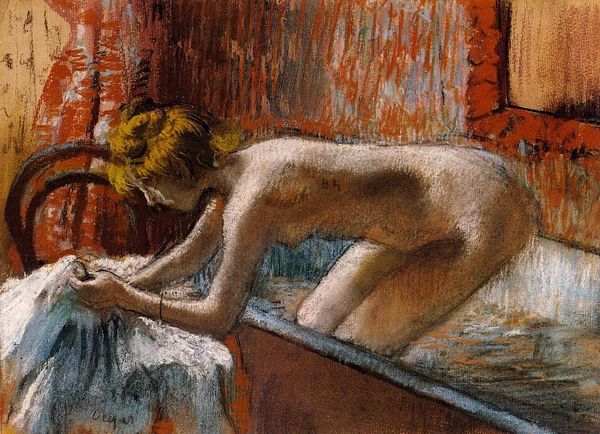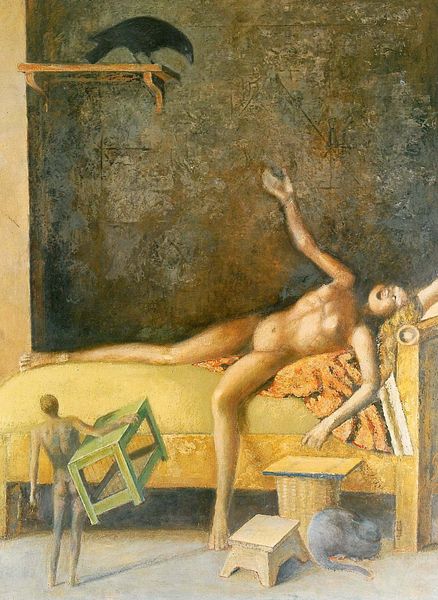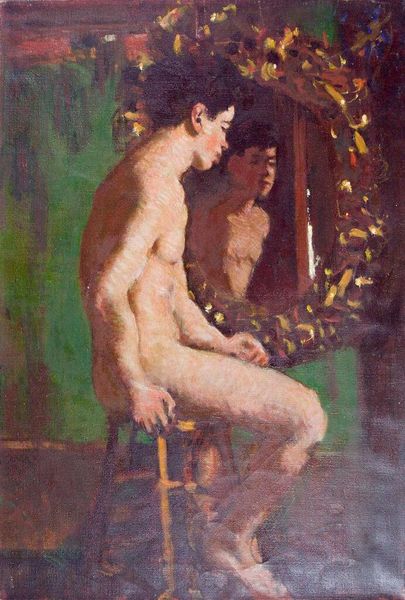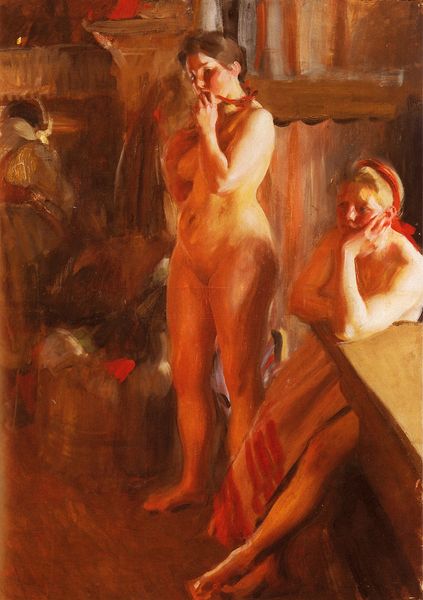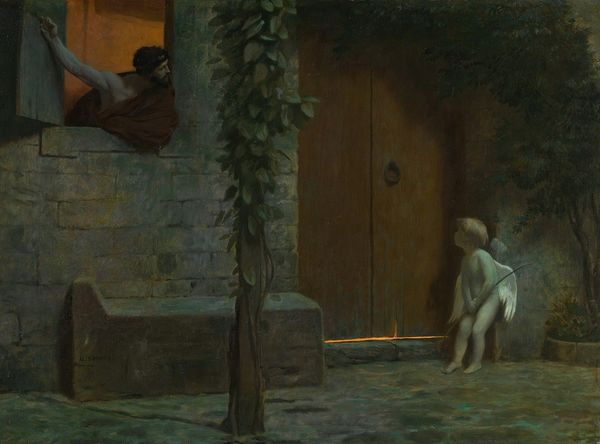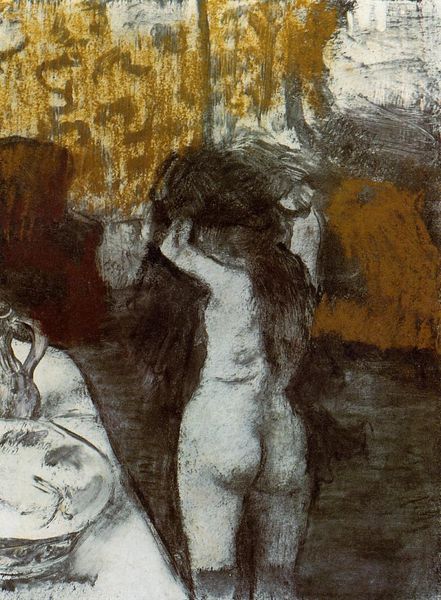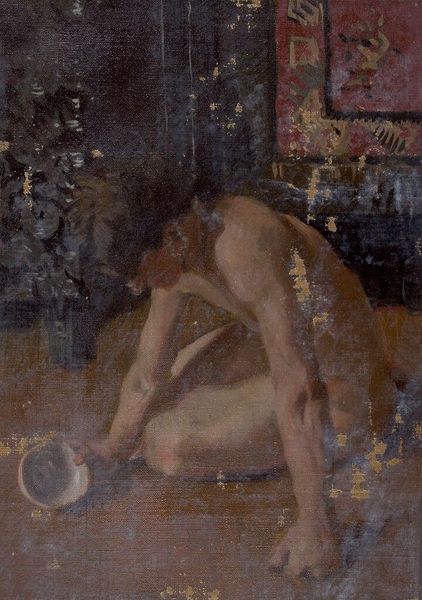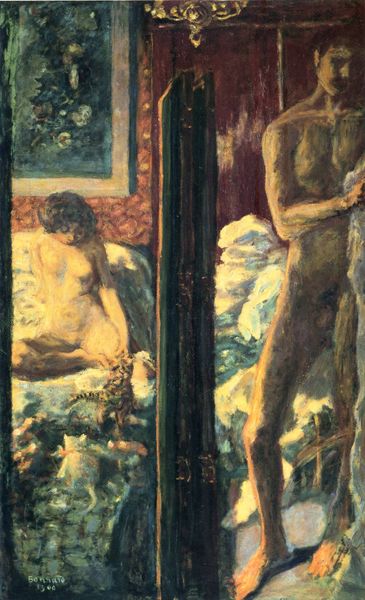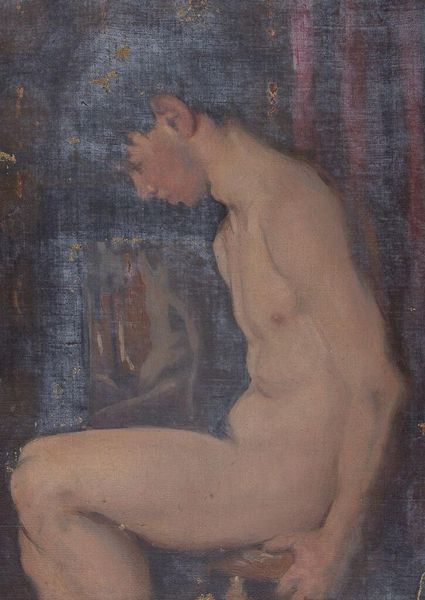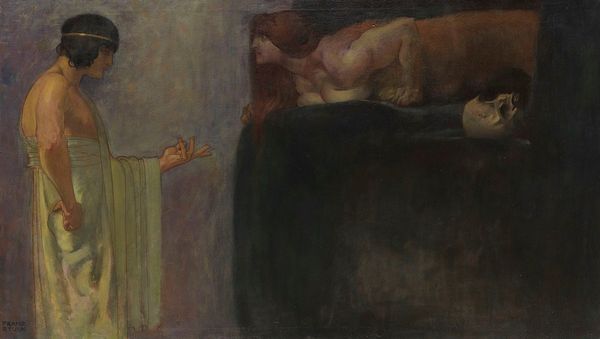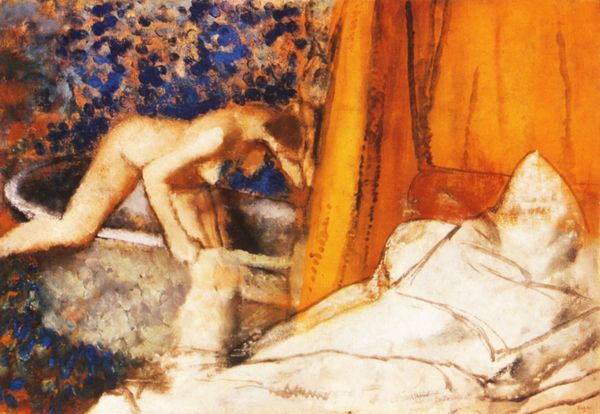
Copyright: Public domain
Curator: Here we have Paul Peel's "After the Bath," painted in 1890 using oil on canvas. What strikes you first about this piece? Editor: The hazy warmth. The whole canvas seems to glow, particularly around the children’s bodies. The soft, diffuse light is almost tangible. It creates an intimate and, frankly, quite sensual mood. Curator: Indeed. It's crucial to remember that this genre scene also participates in a much larger conversation about late 19th century attitudes toward the home, childhood, and idealized domesticity. How does Peel’s process affect the construction of this ideal? Editor: Look at the brushwork; the way he’s rendered the carpet is much looser than the skin, for instance. He emphasizes form, creating almost sculptural bodies. Curator: Yes, but also consider the role of artistic training and the art market here. Peel, like many Canadian artists of his generation, trained in Paris and actively sought recognition at the Salon. The nudity is classical, almost academic. Think about the specific markets that valued these paintings, and who owned them. It wasn't just about aesthetics, but about social aspirations and status. Editor: Fair enough, the positioning of the children by the gilded mirror evokes the opulence desired by that social class, and I do agree that he's self-consciously deploying the "nude" as a trope. But regardless, it's still about form. The curves of the children play beautifully against the angular mirror, anchoring them in the composition. The warmth against the darker background is carefully planned to produce emotion. Curator: True. The dark, moody backdrop does draw attention to the figures. However, thinking about his choice of materials is relevant here too. Why oil, specifically, for rendering this scene? The glossy, slightly translucent quality adds to the painting's richness and depth, but is this richness an aesthetic achievement alone? Or is it a visual manifestation of a complex economy of art production and display? Editor: Interesting perspective. It pushes us to consider art-making beyond aesthetics alone. Curator: Exactly. Every artistic choice, from the material itself to the subject matter, participates in broader cultural narratives. Editor: I will keep that in mind moving forward as I view other artworks! Thank you!
Comments
No comments
Be the first to comment and join the conversation on the ultimate creative platform.
